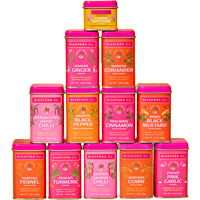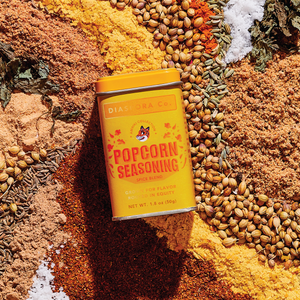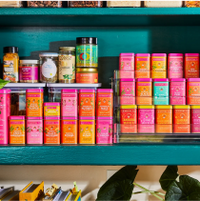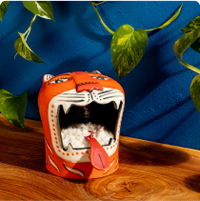- ½ cup (115g) water
- 1 tablespoon apple cider vinegar
- 2 ¾ cups (345g) spooned and leveled all-purpose flour, plus more as needed
- 1 tablespoon Madhur Jaggery or sugar
- 1 ½ teaspoons Surya Salt or Diamond Crystal or ¾ teaspoon Morton kosher salt
- 2 ½ sticks (10 ounces/ 285g) unsalted butter, cut into ½-inch (13mm) cubes, chilled
Ingredients
Methods
- In a liquid measuring cup or a small bowl, combine the water and the vinegar. Place this in the freezer while you work on the next steps.
- In a large bowl, use your fingers or a fork to combine the flour, sugar, and salt.
- Add the butter to the large bowl and use your fingers or a fork to gently toss around the butter to coat it in the flour mixture. Use your fingers to smash and rub the butter into the flour mixture until it forms flat pieces mostly the size of cannellini beans (about ¾ inch/2 cm) with some smaller (think chickpeas and lentils; about ½ and ¼ inch/13 and 6 mm). The mixture should still look dry and crumbly.
- Remove the water-vinegar mixture from the freezer. Drizzle half of the water-vinegar mixture over the flour-butter mixture. Working from the bottom of the bowl up, use your fingers or a fork to gently toss the mixture together, as if you were tossing a salad. Drizzle over another splash of the water-vinegar mixture and toss. Continue to drizzle and toss until a shaggy, chunky mixture forms. It should not be completely combined yet, but there also should be no totally dry areas of flour (look for pebbles of moistened flour, not pure powder). You may not need the full amount of water-vinegar mixture. When in doubt, err on the dry side: You can always add liquid, but you can’t take it away.
- Here’s how to know if you’re in a good place: Pick up a handful of the mixture and squish it. It should mostly hold its stuck-together shape; if not, drizzle an additional 1 teaspoon water-vinegar mixture on the driest areas and toss again, repeating until it holds together.
- Dump the mixture onto a clean work surface and use your hands to pat it together into a rectangular mass about 1 inch (2.5 cm) thick. If you find any more areas that look totally dry, drizzle them with another 1 teaspoon water-vinegar mixture.
- Use your hands or a bench scraper to fold the mass of dough over itself. Press down the dough until it’s about 1 inch (2.5 cm) thick again. (The dough shouldn’t be moist or sticky, but if so, sprinkle it with a bit of flour as you fold.) Repeat folding and pressing down the dough two or three times. As you fold the dough over itself, the shaggy mass will form into a cohesive dough (this is also going to help the crust bake off extra-flaky). The butter should not blend all the way in, and the surface of the dough should look like marble or wood grain.
- Divide the dough in half, placing each half on a piece of plastic wrap.
- Wrap the dough in the plastic wrap, then press it into a round or rectangle (see Note) about ¾ inch (2 cm) thick. Refrigerate for at least 2 hours and up to 5 days. Alternatively, freeze for up to 3 months; when you’re ready to bake. NOTE: Shaping your dough into the approximate shape of your galette (round, rectangular, etc.) will be helpful when rolling it out, but it’s not imperative to achieve success. In fact, I typically shape my dough into squares for easy stacking in the freezer.
- Remove the rested dough from the refrigerator and let it sit out for 5 to 10 minutes (this allows the dough to soften slightly, making it easier to roll out, without getting too warm). Line a sheet pan with parchment paper. Dust a work surface lightly with flour.
- Unwrap the dough, sprinkle it with flour, and use a rolling pin to roll it out, flipping and turning the dough and adding more flour as needed to avoid sticking, into a round about 13½ inches (34 cm) in diameter and between ⅛ and ¼ inch (3 and 6 mm) thick; or a rectangle about 14 by 11 inches (33 by 28 cm) and between ⅛ and ¼ inch (3 and 6 mm) thick. If at any point the dough starts to crack, press it together with your fingers.
- Gently fold the dough into quarters (this is just to help you move it; don’t press down), place on the parchment-lined sheet pan, and unfold. From here, return to the galette recipe.




























